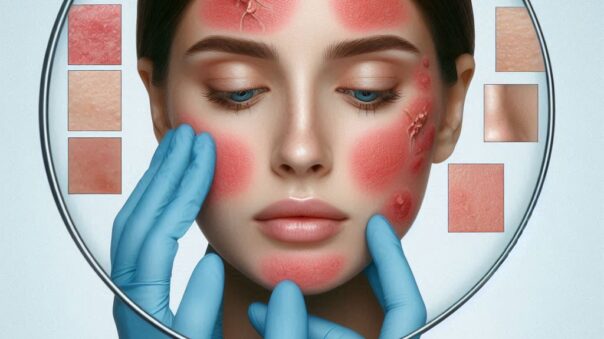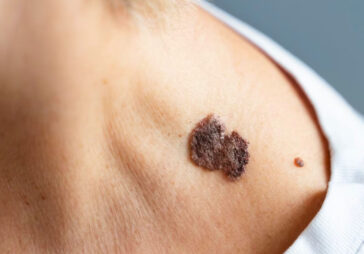Facial redness is a common dermatological concern that can arise due to various factors, ranging from temporary triggers like embarrassment or sunburn to chronic conditions such as rosacea or eczema. Understanding the underlying causes of facial redness and exploring effective management strategies is essential for alleviating discomfort and restoring a calm, even complexion.
What causes facial redness
Facial redness is caused by a variety of conditions, including medical and emotional responses. Red blotches on the face may emerge from sun-exposure, allergic reactions, acne breakouts or even uncontrolled temperature changes.
Exploring Facial Redness
Facial redness refers to the visible flushing or discoloration of the skin, characterized by a pink, red, or inflamed appearance. It can occur intermittently or persistently and may affect specific areas of the face, such as the cheeks, nose, forehead, or chin. Facial redness can be influenced by external factors, internal triggers, or underlying skin conditions.
Common Causes of Facial Redness
a. Rosacea: A chronic inflammatory skin condition characterized by recurrent episodes of facial flushing, redness, visible blood vessels (telangiectasia), and sometimes papules and pustules.
b. Sun Exposure: Prolonged exposure to UV radiation can lead to sunburn, inflammation, and temporary redness, as well as exacerbate underlying skin conditions like rosacea.
c. Sensitive Skin: Individuals with sensitive skin may experience redness and irritation in response to environmental factors, harsh skincare products, or certain ingredients.
d. Allergic Reactions: Allergens in skincare products, cosmetics, or environmental triggers can cause skin irritation, inflammation, and redness.
e. Eczema (Atopic Dermatitis): A chronic inflammatory skin condition characterized by dry, itchy, and inflamed patches that may appear red and irritated, especially on the face.
Management and Alleviation of Facial Redness
a. Gentle Skincare Routine: Use mild, fragrance-free cleansers and moisturizers suitable for sensitive skin to minimize irritation and inflammation.
b. Sun Protection: Apply broad-spectrum sunscreen with SPF 30 or higher daily to protect against UV damage and reduce the risk of sun-induced redness.
c. Topical Treatments: Incorporate anti-inflammatory ingredients like niacinamide, green tea extract, or licorice root extract into your skincare routine to calm redness and soothe irritated skin.
d. Avoid Triggers: Identify and avoid triggers that exacerbate facial redness, such as spicy foods, alcohol, hot beverages, extreme temperatures, and harsh skincare products.
e. Cooling Agents: Apply cool compresses, chilled cucumber slices, or soothing gel masks to reduce inflammation and soothe redness during flare-ups.
f. Prescription Medications: For persistent redness associated with conditions like rosacea or eczema, dermatologist-prescribed medications such as topical steroids, azelaic acid, or oral antibiotics may be necessary.
g. Professional Treatments: Dermatological procedures like laser therapy, intense pulsed light (IPL) therapy, or vascular laser treatments can target blood vessels and reduce redness in conditions like rosacea.
Lifestyle Modifications
a. Stress Management: Practice relaxation techniques, mindfulness, or yoga to reduce stress levels, which can trigger facial redness.
b. Dietary Considerations: Maintain a balanced diet rich in anti-inflammatory foods like fruits, vegetables, fatty fish, and whole grains to support skin health and reduce redness.
c. Hydration: Drink plenty of water to keep the skin hydrated and promote overall skin health and resilience.
Facial redness can be a source of discomfort and self-consciousness for many individuals, but with proper understanding and management, it is possible to alleviate symptoms and achieve a calmer, more balanced complexion. By identifying triggers, adopting a gentle skincare routine, protecting against sun damage, and seeking professional guidance when necessary, you can effectively manage facial redness and enjoy healthier, more radiant skin. Remember, patience and consistency are key, and with the right approach, you can minimize redness and embrace a more confident, comfortable you.
By understanding the triggers of facial redness and adopting a gentle skincare approach, you can restore balance to your complexion and embrace a calmer, healthier glow.
It is important to understand what the root causes are for facial redness on your face. Some concerns can be targeted through much simpler treatment processes, such as being more consistent with sunscreen application or opting into skincare products that help combat facial redness. However it is important to acknowledge that, if ever in doubt, seeking medical expertise is always advised.
Instant Skin AI check-up with the Skinive app. Download now for personalized skincare insights and unleash your skin’s potential.










